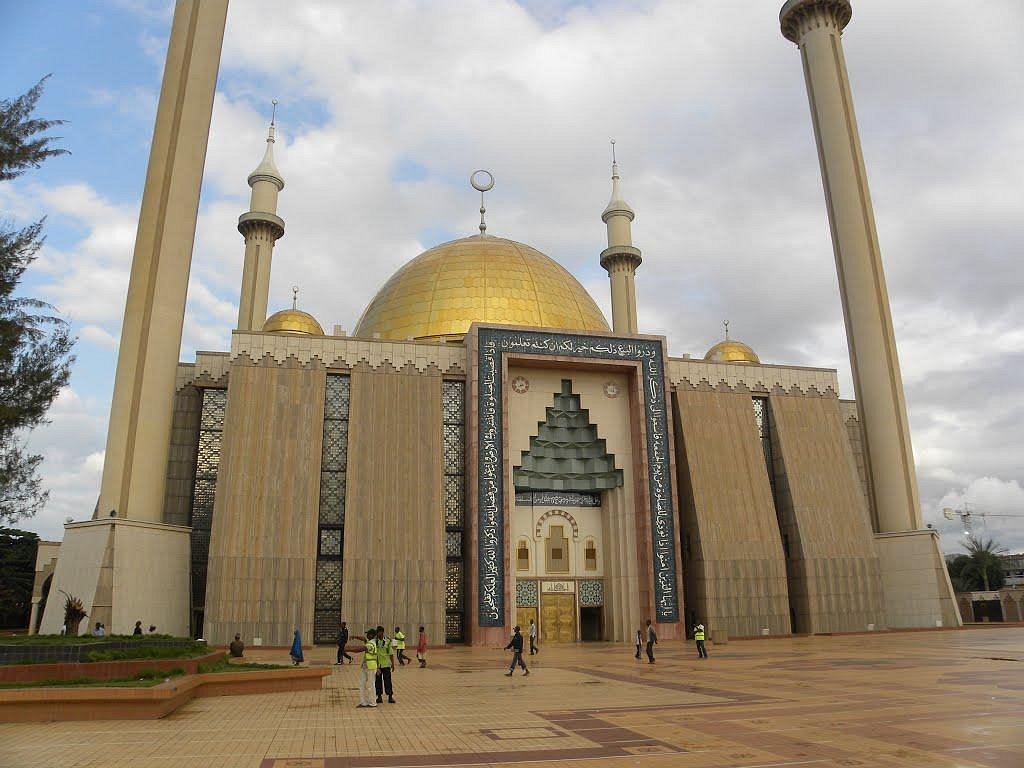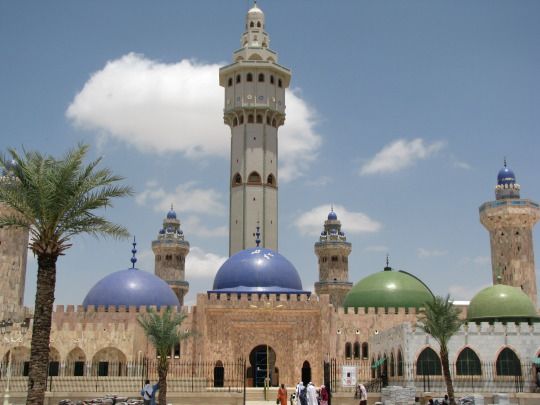Africa is a continent with a rich history and culture, and Islam has played a significant role in shaping its heritage.
The spread of Islam across Africa brought with it a wealth of knowledge, art, and architecture, which can be seen in the many stunning mosques found throughout the continent.
Each mosque in Africa has its own unique story and significance. From the tile work of the Great Mosque of Djenne in Mali to the imposing silhouette of the Hassan II Mosque in Casablanca, the mosques of Africa are a testament to the region’s vibrant Islamic tradition.
In this article, we’ll explore the top 10 most beautiful mosques in Africa. We’ll examine their history and learn about the stories behind these awe-inspiring structures.
Join us as we take a journey through Africa’s rich Islamic heritage and discover the beauty of its mosques.
- Great Mosque of Kairouan, Tunisia
- The Great Mosque of Djenne, Mali
- Nizamiye Mosque, Midrand, South Africa
- Hassan II Mosque, Casablanca, Morocco
- Abuja National Mosque, Abuja, Nigeria
- Soofie Mosque, Ladysmith, South Africa
- The Great Mosque of Touba, Senegal
- The Great Mosque of Tlemcen, Algeria
- Al-Azhar Mosque, Cairo
- Uganda National Mosque
1. Great Mosque of Kairouan, Tunisia
The Great Mosque of Kairouan is one of the most beautiful mosques in Africa and also the oldest Muslim place of worship on the continent. It was built in the year 670 and is located in Tunisia.

The mosque has a mixture of different architectural styles, including pre-Islamic, Roman, and Byzantine influences. The mosque is also known as the Uqba Mosque and is considered the fourth holiest site in Islam after Mecca, Medina, and Jerusalem.
The mosque is part of a large complex and covers an area of 10,800 square meters. Inside the mosque, there is a prayer room with 17 naves supported by columns.
The mihrab, which is a special niche that indicates the direction of Mecca, is decorated with marble panels and luster tiles with floral patterns.
There is also a pool called the Old Cistern and a finely carved wooden pulpit made of Asian teak. Outside, there is a courtyard with decorated flagstones and a tall minaret that is 32 meters high.
The mosque’s architecture is a blend of different styles, including pre-Islamic and Eastern Islamic art, as well as Roman and Byzantine influences.
The mosque has served as a model for many other mosques in the Maghreb region. The Great Mosque of Kairouan is at the heart of the city’s heritage, standing at the intersection of 15 different thoroughfares, and is an important symbol of the region’s Islamic heritage.
2. The Great Mosque of Djenne, Mali
The Great Mosque of Djenne is a remarkable structure located in the city of Djenné, Mali.

It is regarded as the biggest mud brick structure in the world and is constructed completely of them. With obvious Islamic elements, many architects consider it to be the pinnacle of Sudano-Sahelian architecture.
The mosque has a lengthy history, with the original one rising in the 13th century. The existing building, which was built in 1907, has come to represent the Djenné neighborhood. It is one of the most well-known mosques in Africa and was named a World Heritage Site by UNESCO in 1988.
The mosque’s location in the Bani River floodplain adds to its distinctiveness.
The mud brick construction gives it a distinct appearance, and the intricate design and craftsmanship are awe-inspiring. The Great Mosque of Djenne is a testament to the region’s architectural heritage and an important symbol of Mali’s rich cultural history.
3. Nizamiye Mosque, Midrand, South Africa
The Nizamiye Mosque, also known as the Nizamiye Masjid, is a beautiful mosque located in Midrand, Johannesburg, South Africa.

It was built in 2012 by a Turkish philanthropist and is modelled after the 16th-century Ottoman Selimiye Camii mosque in Edirne, Turkey.
The mosque is a masterpiece of architecture, with all of the marble, carpets, stained glass, and ceramics being brought in from Turkey.
The interior detailing is intricate and has been hand-painted. There are 21 domes, with the main one being framed by four towering minarets that rise 32 meters high. Over 200 stained-glass windows adorn the building, adding to its beauty.
The prayer hall is spectacular and can accommodate more than 3,000 people. The main building also features meeting rooms, a small exhibition about Ottoman architecture, and a peaceful courtyard that visitors can explore.
Women are provided with shawls to cover up, and all visitors are asked to remove their shoes before entering the prayer hall.
The Nizamiye complex also has a school, clinic, Turkish supermarket, bakery, barber, bookshop, a carpet and ceramics store, and a Turkish restaurant.
After your visit, don’t miss out on the delicious Turkish delights and tea at the bakery. If you have more time, you can stay for lunch or dinner at the Ottoman Palace restaurant. This mosque is an important cultural landmark in South Africa and is well worth a visit.
4. Hassan II Mosque, Casablanca, Morocco
The magnificent Hassan II Mosque was built in Morocco to commemorate the former king’s 60th birthday. The city’s most recognizable sight is a 210-meter-tall minaret, which is situated on a cliff that juts out into the ocean.

The mosque is adorned with Moroccan craftsmanship, including hand-carved stone and wood, intricate marble inlay, gilded cedar ceilings, and gorgeous zellij (colorful ceramic tiling). With space for up to 25,000 worshipers, the mosque is thought to be the third-largest mosque in the entire globe. The mosque’s six-year construction, which was financed by King Hassan II, was planned by French architect Michel Pinseau.
The basement of the mosque has a glass floor that allows worshipers to observe the Atlantic Ocean crashing over the rocks and a movable ceiling that lets light in. Outside of prayer times, modestly clothed visitors can receive multilingual guided tours of the mosque’s interior.
5. Abuja National Mosque, Abuja, Nigeria
The Abuja National Mosque, also known as the Nigerian National Mosque, is a significant mosque in Nigeria that was built in 1984.

It is the national mosque and is open to everyone except during prayer times. The chief imam of the mosque is Ustadz Musa Mohammed.
The mosque is located in the capital city of Abuja, on Independence Avenue. The mosque has a library and a conference room that can accommodate up to 500 people. It also has offices for the Islamic Centre, and living quarters for the imam and muezzin. Many people consider it the most beautiful mosque in Nigeria.
6. Soofie Mosque, Ladysmith, South Africa
The Soofie Mosque is a beautiful mosque that was built in 1969 and is considered one of the best in the country. It has intricate stonework, arches, turrets, and tall minarets that photographers love to capture.

This mosque is famous in the country and is known as the Soofie Masjid. Its history dates back to 1895 when Hadrat Soofie Saheb, an important Muslim mystic, arrived in South Africa.
He aimed to build 12 mosques along the eastern coast of Durban within 15 years, and the Soofie Mosque is one of his achievements. The mosque is open to visitors and non-Muslims are welcome, but during prayer times, it is closed to visitors.
7. The Great Mosque of Touba, Senegal
The Great Mosque of Touba in Senegal is a remarkable mosque founded by Amadou Bamba in 1887 and completed in 1963.
Bamba, who is buried inside the mosque, passed away in 1927 and his family has been in charge of the mosque ever since.
It is the biggest structure in the city and one of the largest mosques in Africa, capable of holding 7,000 people. The mosque is an important pilgrimage site, particularly during the Grand Magal of Touba.
The mosque is adorned with five minarets and three large domes. The central minaret, called Lamp Fall, stands at a height of 87 meters (285 feet) and is named after Sheikh Ibrahima Fall, one of Bamba’s most influential followers.
The mosque’s immediate vicinity includes the tombs of Amadou Bamba’s sons, the caliphs of the Mouride order, as well as important institutions such as a library, the Caliph’s official audience hall, a sacred Well of Mercy, and a cemetery.
8. The Great Mosque of Tlemcen, Algeria
The Great Mosque of Tlemcen is located in Tlemcen, Algeria and was originally constructed in 1082. It is a well-preserved example of the Almoravid dynasty’s architectural style.
The mosque was built under sultan Yusuf ibn Tashfin and was later expanded and reconstructed by his son Ali ibn Yusuf in 1136.
In the 13th century, sultan Yaghmoracen, founder of the Abdalwadid dynasty of Tlemcen, added a section with a minaret and a dome. Alongside the mosque, there used to be an Islamic court (Makhama) and a renowned Islamic university.
9. Al-Azhar Mosque, Cairo
Al-Azhar Mosque ( “mosque of the most resplendent”) is an Egyptian mosque in Islamic Cairo, Egypt. Al-Mu’izz li-Din Allah of the Fatimid Caliphate commissioned its construction for the newly established capital city in 970.
Its name is usually thought to allude to the Islamic prophet. Muhammad’s daughter Fatimah, a revered figure in Islam who was given the title az-Zahrā′ (“the shining or resplendent one”).
It was the first mosque established in Cairo, a city that has since gained the nickname “the City of a ThousandMinarets.
After its dedication in 972, and with the hiring by mosque authorities of 35 scholars in 989. This famous mosque slowly developed into what is today the second oldest continuously run university in the world.
Also read: 10 Biggest Churches in Africa
Al-Azhar University has long been regarded as the foremost institution in the Islamic world for the study of Sunni theology and sharia, or Islamic law.
10. Uganda National Mosque
The Uganda National Mosque is a famous mosque located in the Old Kampala area of Kampala, Uganda. It was finished in 2006 and can accommodate up to 15,000 worshipers, with an additional 1,100 in the gallery and 3,500 on the terrace.
Colonel Muammar Gaddafi of Libya commissioned the mosque as a gift for Uganda and its Muslim population. It is a tall mosque and one of the most well-known in Uganda.
The mosque was officially opened in June 2007 as the Gaddafi National Mosque and was the home of the Uganda Muslim Supreme Council.
However, after Colonel Gaddafi’s death, the mosque was renamed the Uganda National Mosque in 2013 because the new Libyan administration did not want it to keep its old name.

